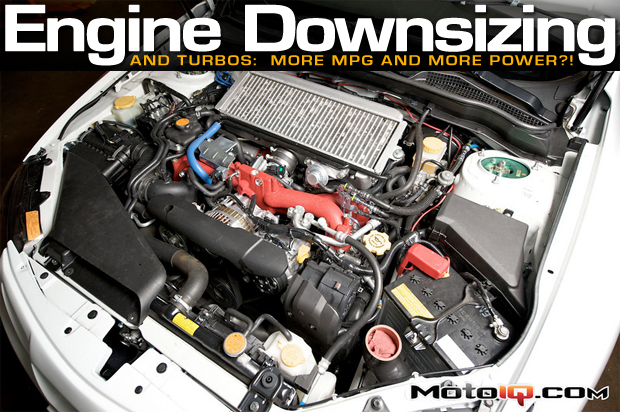,
The turbocharger adds the one extra adjustable knob that can be turned to adjust the torque curve to make it as flat as possible. On a turbocharged engine, it is a simple matter of turning up or down the boost pressure to account for the changing VE to achieve a flat torque curve. Modern turbocharged engine specifications reflect this flatness. For example, the new BMW N20 engine (2.0L turbocharged 4-cylinder) has a torque rating of 350Nm from 1250-4800rpm. The current trend in the automotive industry is to replace big NA engines with smaller turbocharged engines. Below are two examples from BMW and Mercedes.
 |
||
| I found this chart at BMWblog comparing the new 2013 BMW M5 (F10) to the previous generation M5 (E60). The F10 uses a 4.4L V8 with twin-turbos from Honeywell Turbo Technologies. The older E60 uses a 5.0L naturally aspirated V10. As you can see, the F10 torque curve is as flat as a pool table from 1500rpm to almost 6000rpm. The F10 twin-turbo V8 is rated at 412kW (just over 550hp) compared to only 500hp for the E60 V10. Even better, the F10 has 36% more torque at 2200rpm where you’d spend a lot of your time during daily driving. The F10 has a smaller engine but more torque and power everywhere. Gotta love boost! |
|
 |
| Here’s dyno data from the guys at Edmunds InsideLine. Mercedes followed the same strategy (as is EVERYONE in the automotive industry) and replaced its 6.2L (Mercedes rounds up to 6.3 in the name, but it’s really only 6208cc, so just a smidge over 6.2L) naturally aspirated V8 with a twin-turbo 5.5L V8 also sporting turbos from Honeywell Turbo Technologies. As you can see, the torque curve of the turbo S63 engine is much fatter and much bigger than the naturally aspirated V8. The torque curve is also nice and flat from 2500-4200rpm. |
The flat torque curve is nice, but we like turbos for making power. Lots of power. Do you know what the best part about turbocharged cars is? It only takes some ECU tweaking to gain a lot more power! To use the S2000 as the naturally aspirated counter example, to go from 200whp to 230whp (typical S2000 dynojet numbers) generally requires an intake, header, test pipe, exhaust, ECU tuning, and maybe some cams. That’s a lot of work to gain 15% power and torque. Let’s have a quick look at MotoIQ Projects S2000, STI, and Evo X to see what it takes to make power on them.
 |
| Around 2600-2700rpm, there’s a torque gain of about 20% from a tune using the Hondata KPro on an otherwise stock S2000. The peak torque gain is only about 2.5%. More torque and power is hard to come by on a naturally aspirated engine. |



